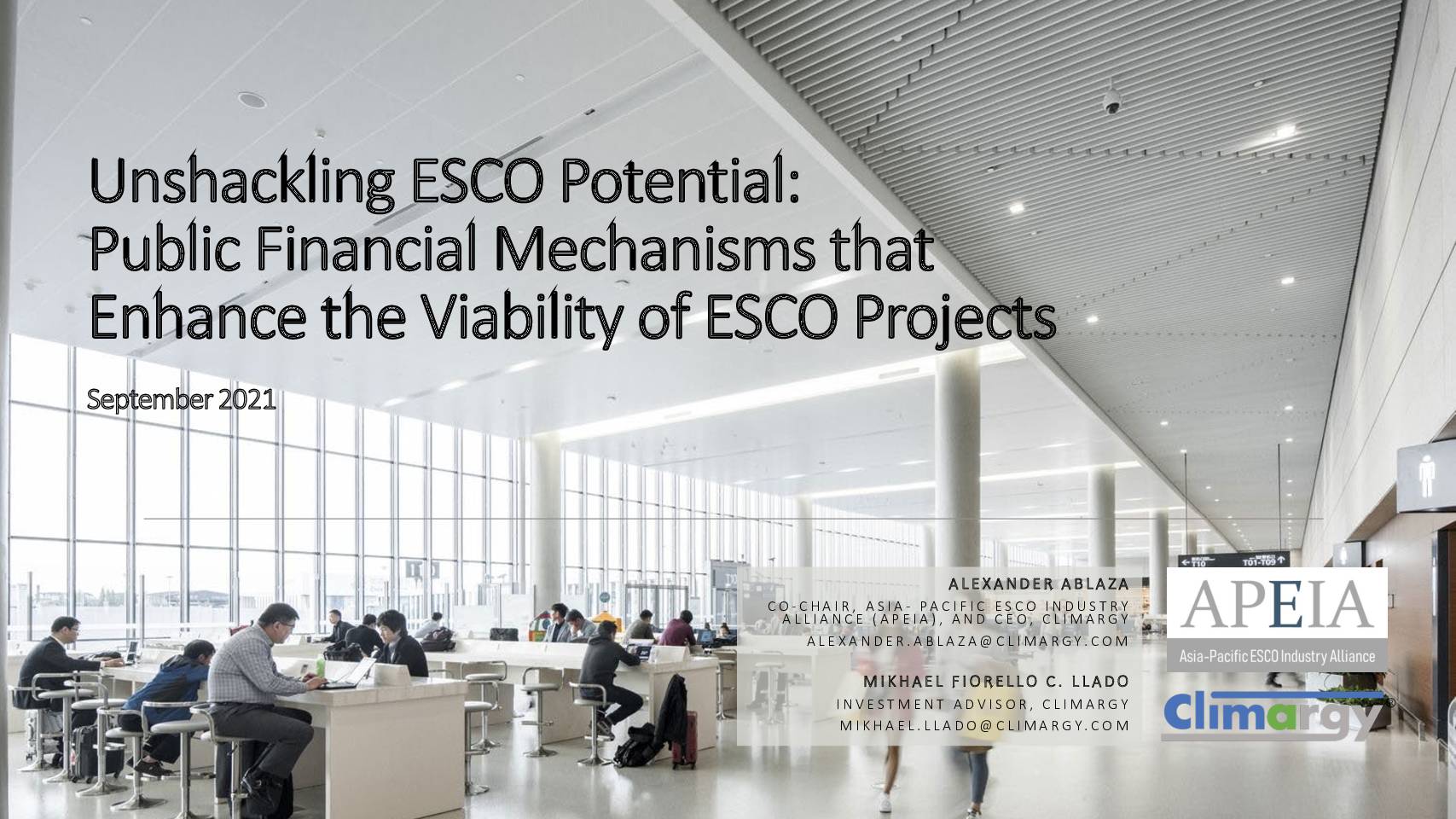In order to reduce the annual growth in global energy demand through 2040 from 1.0% to 0.3%, an estimated USD 24.5 trillion in energy efficiency (EE) investments will be needed. Across developed energy service markets around the world, the public sector can potentially mobilize the bulk of that capital by creating a demand for ESCO services and introduce financial mechanisms that will enhance project viability.
Such initiatives could include the use of energy performance contracting in public procurement processes, efficient distribution of project risks and reduction in upfront costs through efficient large-scale delivery of technical and financial resources through Super ESCOs. Government agencies can also arrange long-term concessional financing with development partners to attain sub-commercial lending terms or energy efficiency revolving fund with preferred access for ESCOs.
These are just a few of the financing mechanisms and practices for ESCO that Alexander Ablaza, Founding Convenor and Co-Chair of Asia-Pacific ESCO Industry Alliance, and CEO of Climargy and Mikhael Fiorello C. Llado ERP, CFA, Investment Advisor at Climargy will present at the coming Global ESCO Network webinar.
ESCOs are commonly considered a financing mechanism that enable their clients to shift the cost of energy efficiency investment to a third party, but most ESCOs have their origin in technical expertise and need a supporting capital structure in order to deliver their services. This webinar will make a clear-cut case for unshackling the energy efficiency potentials by ensuring the financial basis for a thriving ESCO market.
Download sourceShare this

Sector: ESCO
Country / Region: Global
Tags: carbon, economic capital, energy, energy demand, energy efficiency, funds, industry, performance contracting, projects, risksIn 1 user collection: C2E2 Webinars
Knowledge Object: eLearning
Published by: Copenhagen Centre on Energy Efficiency
Publishing year: 2021




